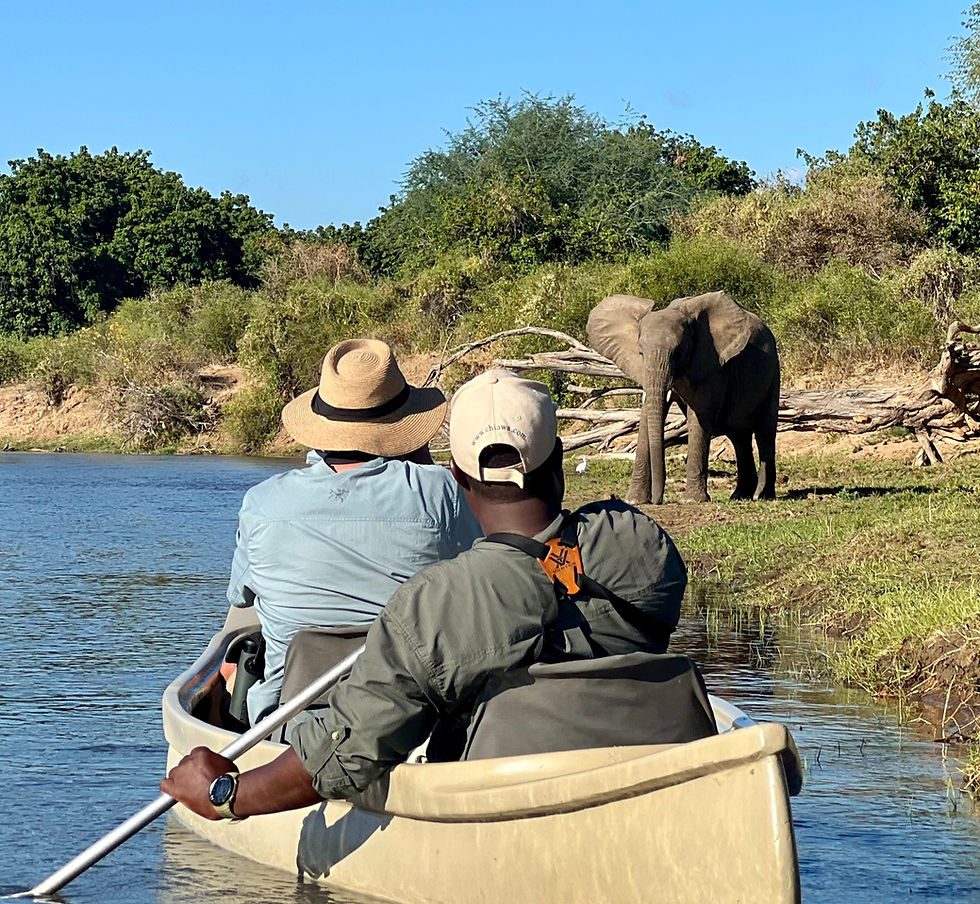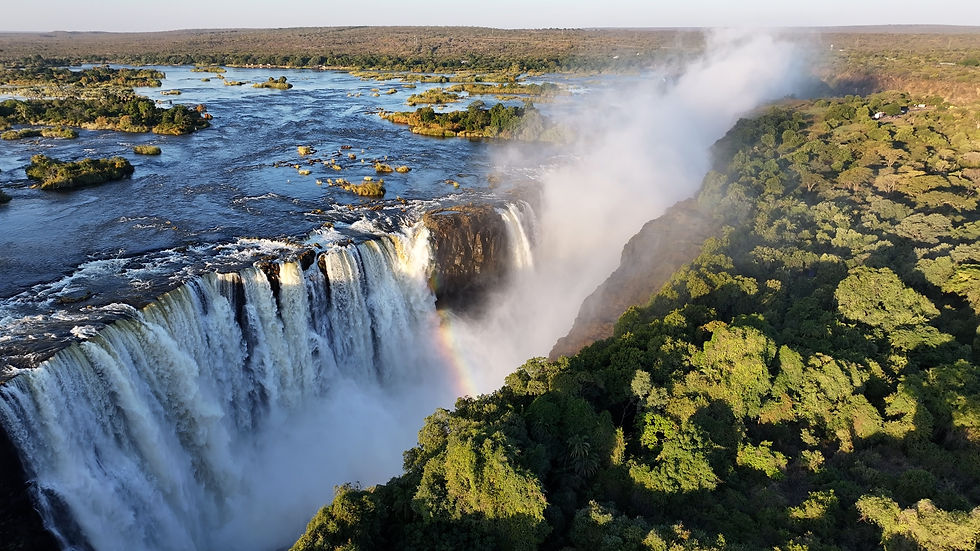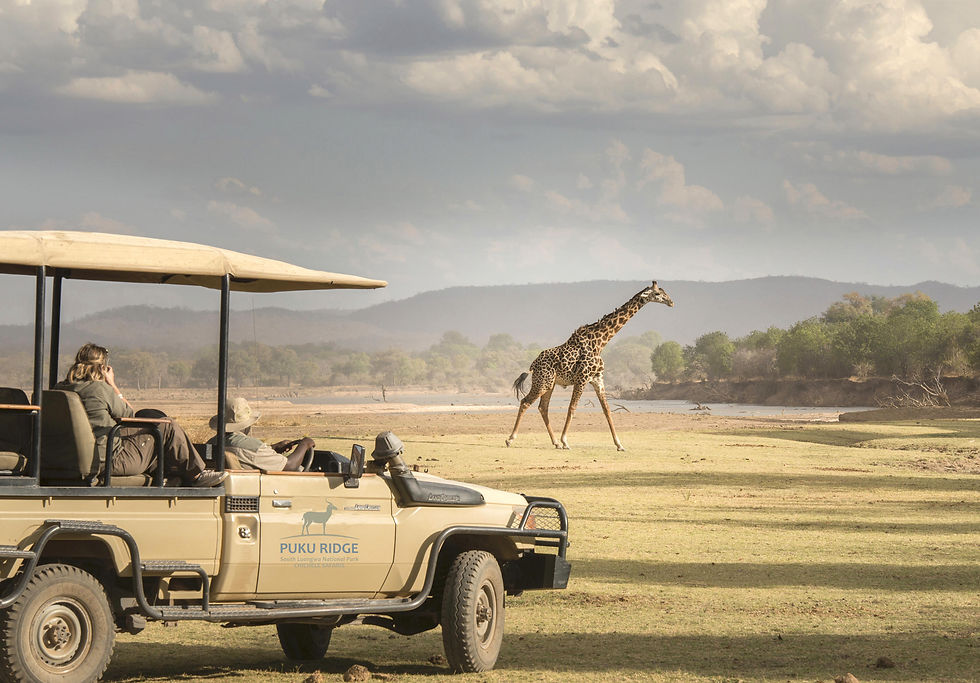Essential Tips for Planning Your Perfect Safari Adventure
- Jeff Stivers

- Aug 4
- 7 min read
Updated: Aug 5
Many travelers come to us with a vision for their African safari experience. They want to see the Big Five, witness dramatic wildlife encounters, and visit the iconic places they’ve heard about for years— The Serengeti, Okavango Delta, Victoria Falls, Cape Town... and everything in between. Some arrive with extensive research already done, which is fantastic. But soon, questions begin to pile up: With so many safari regions, so many camps and lodges, and every tour operator claiming to be “the best,” how do you choose? Will this once-in-a-lifetime trip live up to the hype? Am I getting a good value? How does one fly from Cape Town to Jeki? Can someone please just help me figure this out?!
We get it. The safari landscape is vast and nuanced—and constantly evolving. But with the right guidance, you can avoid common pitfalls and design a safari that’s deeply rewarding and truly unforgettable. After years of designing and personally experiencing safaris across the continent, here are some key tips to help guide your planning journey.

1. Less Is More
One of the biggest mistakes travelers make is trying to cover too much ground. Africa is enormous, and distances are deceiving. (For context, Africa is about 3 times larger than the entire U.S. You can fit the U.S.A., China, India, Japan, and most of Europe inside Africa with room to spare!) We recommend focusing on one—maybe two—countries per trip.* Spend at least three nights in each safari area (four is ideal). Wildlife viewing is unpredictable by nature: the lions might have made a big kill the day before you arrive and will spend the next day sleeping in the shade. Weather can change. Sightings ebb and flow. Allow time for the experience to unfold and for nature to bestow her magic—rushing from place to place often means missing the magic entirely. *Southern African safari destinations, including South Africa, Botswana, Zambia, Zimbabwe, Mozambique and Namibia, are almost alway accessed via commercial flights into South Africa, via either Cape Town or Johannesburg. And Victoria Falls, which straddles Zambia and Zimbabwe, is a popular and easy add-in to a safari in any of these destinations. So take this suggestion with a grain of salt; it's not uncommon for a 2-3 week trip to include time in a South African city and Victoria Falls, though the bulk of your safari experience will be spent in one or two countries.

2. Mix Habitats & Safari Styles
Every ecosystem supports different types of wildlife. Even within a single region, you'll often find a mix of habitats—riverine forest, open plains, woodland, wetlands. The more variety you include, the more diverse and enriching your wildlife experience will be.
Also, safari doesn’t always mean game drives. Consider mixing in walking safaris, canoe trips, boat cruises, or even horseback and mountain bike safaris where possible. These slower, quieter modes of exploration connect you more intimately with the landscape and offer perspectives that you simply can’t get from a vehicle.
3. Budget Thoughtfully
For a well-crafted two-week safari, budget a minimum of $12,000–$15,000 per person, excluding international flights which vary widely. Yes, you can spend less—but not without sacrificing access, experience, or quality. Conservation fees, remote logistics, and top-tier guides all come at a cost, and for good reason: operating conscientiously in wild, remote places is expensive, and inflation isn’t exclusive to the U.S.
That said, your money can go a long way when spent wisely. We help clients prioritize what matters most, explain how certain "upgrades" can drastically simplify and improve logistics, and avoid overpriced properties that don’t deliver on experience. Expensive does not mean "the best" and "luxury" is best defined at the personal level.
4. Wild lands vs. Disneyland
Not all safari destinations are created equal. Consider the difference between the Okavango Delta in Botswana and Kruger National Park in South Africa. Both have wildlife—but the scale, freedom of animal movement, conservation model, and traveler experience are completely different.
If your dream is sipping champagne while watching lions in a curated landscape, there are properties that cater to that. But if you, like us, are more drawn to authentic wilderness areas—where wildlife roams freely, and your visit directly contributes to protecting fragile ecosystems—then look deeper. The best safaris aren’t just about what you see, but where and how you see it.
5. Embrace Light Aircraft Flights
To access remote, pristine safari areas, you’ll often need to fly on small bush planes. These flights are not only necessary—they’re part of the adventure! Expect jaw-dropping aerial views, smooth landings on dirt airstrips, and the thrill of dropping into a wild, remote, and largely inaccessible place.
The tradeoff? Strict luggage limits (usually 15–20 kg per person in soft-sided bags). But don’t worry—you won’t need much. Safari life is casual, and daily laundry service is standard at most camps and complimentary at many. For more on this, see our guide: Essential Packing Tips for your African Safari.
6. Understand Safari Vehicles
Not all game drives are created equal. Vehicle configuration matters. For the best experience, choose camps that limit vehicles to six guests in three back rows. This ensures everyone has a “window” seat and enough space to comfortably view wildlife, take photos, and engage with your guide.
If a camp advertises more than 6 guests per vehicle, it’s a red flag. These are often high-volume properties catering to the mass-market circuit. You’re investing time and money—don’t end up in the middle seat with no line of sight, compromised photo opportunities and no connection to the experience.

7. Tented Camps vs. Lodges vs. Fly Camps
“Tented” doesn’t mean roughing it—not on safari. In fact, tented camps are often the most immersive and luxurious way to experience the bush.
Here’s a quick breakdown of the different types of accommodations you might have on safari :
Fly Camps: Lightweight, mobile, and temporary—designed for short stays in very remote areas. They may lack creature comforts but offer raw, unforgettable wilderness.
Tented Camps: Permanent or semi-permanent structures with canvas walls and often hardwood flooring. These are designed for comfort while maintaining low environmental impact. Many feature en-suite bathrooms, stylish furnishings, private terraces, communal lounges, and even plunge pools.
Lodges: Brick-and-mortar, full-service hotels in the bush. While they offer the most amenities and highest room counts, they also tend to have more activity, more vehicles, and less intimacy with nature.
Exclusive-Use Villas: Great for groups who want flexibility and privacy; many camps and lodges offer separate villa-style accommodations that can be rented out exclusively and include a dedicated guide/s, vehicle/s and staff for your group.
If you ask us, we usually recommend tented camps for the perfect balance of comfort, atmosphere, and access to nature. But we're well-versed in all options and excel at matching you with the best choice to fit your wants and needs.
8. Land Management Matters
National Parks. Private Reserves. Private Concessions. Conservancies. You'll see these terms attached to some of the most iconic wildlife areas across Africa. And they have a big impact on the type of experience you're likely to have on safari. Generally speaking, National Parks are large tracks of land managed by the government of a country. They are open to all, so tend to be the most crowded, and have the most restrictions on what you can do on safari. In most cases you'll need to stay within your vehicle, stick to the road and you often won't be able to embark on night drives. Conservancies often border national parks, creating an unfenced wildlife corridor for game to move between different areas. This designation means that the land has been set aside for conservation and wildlife, though it is usually managed by local communities instead of governments. The land is then leased to safari operators, who pay the communities to have their lodge in an area that is more exclusive (only open to safari lodges within the conservancy) but boasts similar wildlife numbers to a national park. Restrictions vary; off-roading is sometimes restricted due to conservation though you may be able to embark on walking safaris and night drives. In addition to creating a direct financial benefit for the people with ancestral homes in these wild places, the community-management aspect of conservancies sometimes enables richer cultural exchange which can greatly enhance a safari. (Conservancies, like Lewa Wildlife Conservancy in Northern Kenya, offer some of our favorite safari experiences in Africa.)
Private reserves and concessions designate land that is privately owned and managed (or leased from the government and privately managed) by individuals or corporations for tourism. Some of the highest quality and most exclusive camps in Africa are on private reserves. But the wildlife experience is sometimes carefully managed and the area is fenced vs. open for animals to roam free. Private concessions often border National Parks and do not have fences, but similar to a conservancy as guest will have a more exclusive safari experience with fewer restrictions.
Final Thoughts
Planning a safari doesn’t have to be overwhelming. With thoughtful curation and insider insight, it can be the most extraordinary trip of your life and leave you wanting to return to Africa again and again. If you're finding yourself in the research spiral, unsure how to bring it all together, reach out—we're here to help.
Whether you work with us or another trusted expert, an experienced safari planner will save you time, money, and missed opportunities. And more importantly, they’ll match you with places and experiences that resonate with your travel style, values, and goals.
Want to learn more? Complete our Design My Trip form to get started.










Comments